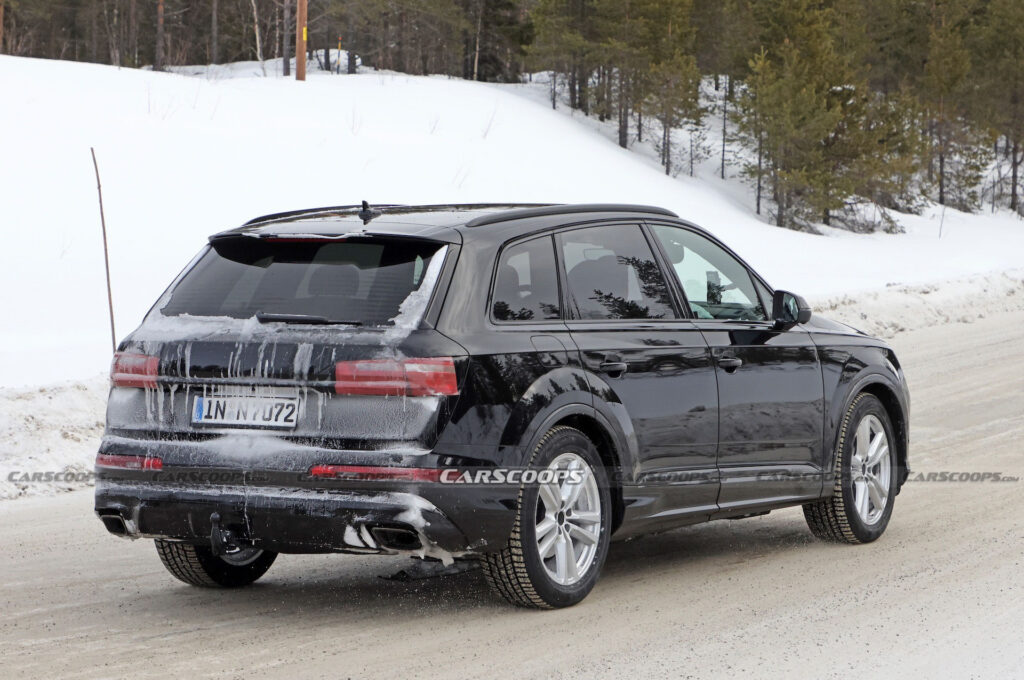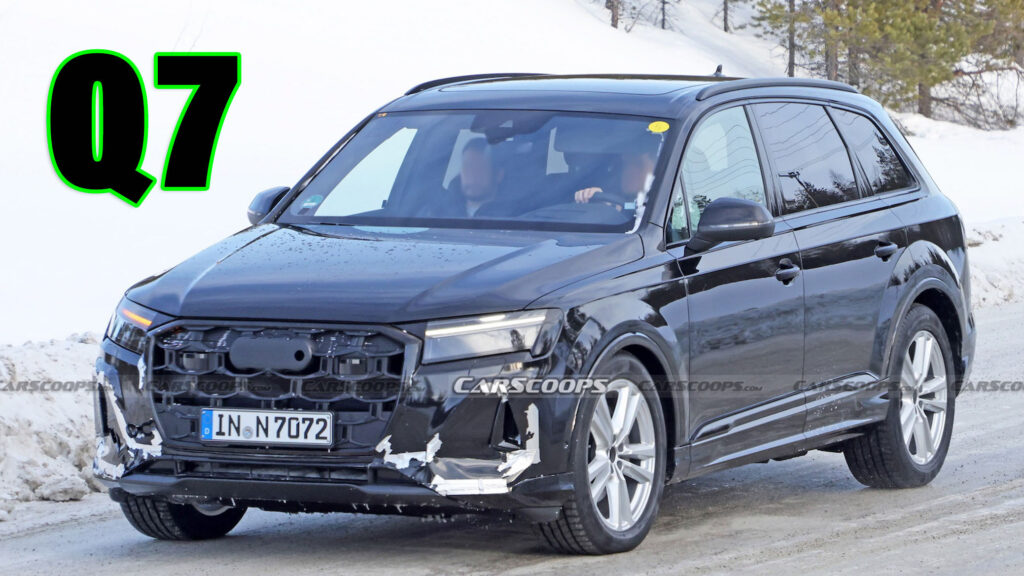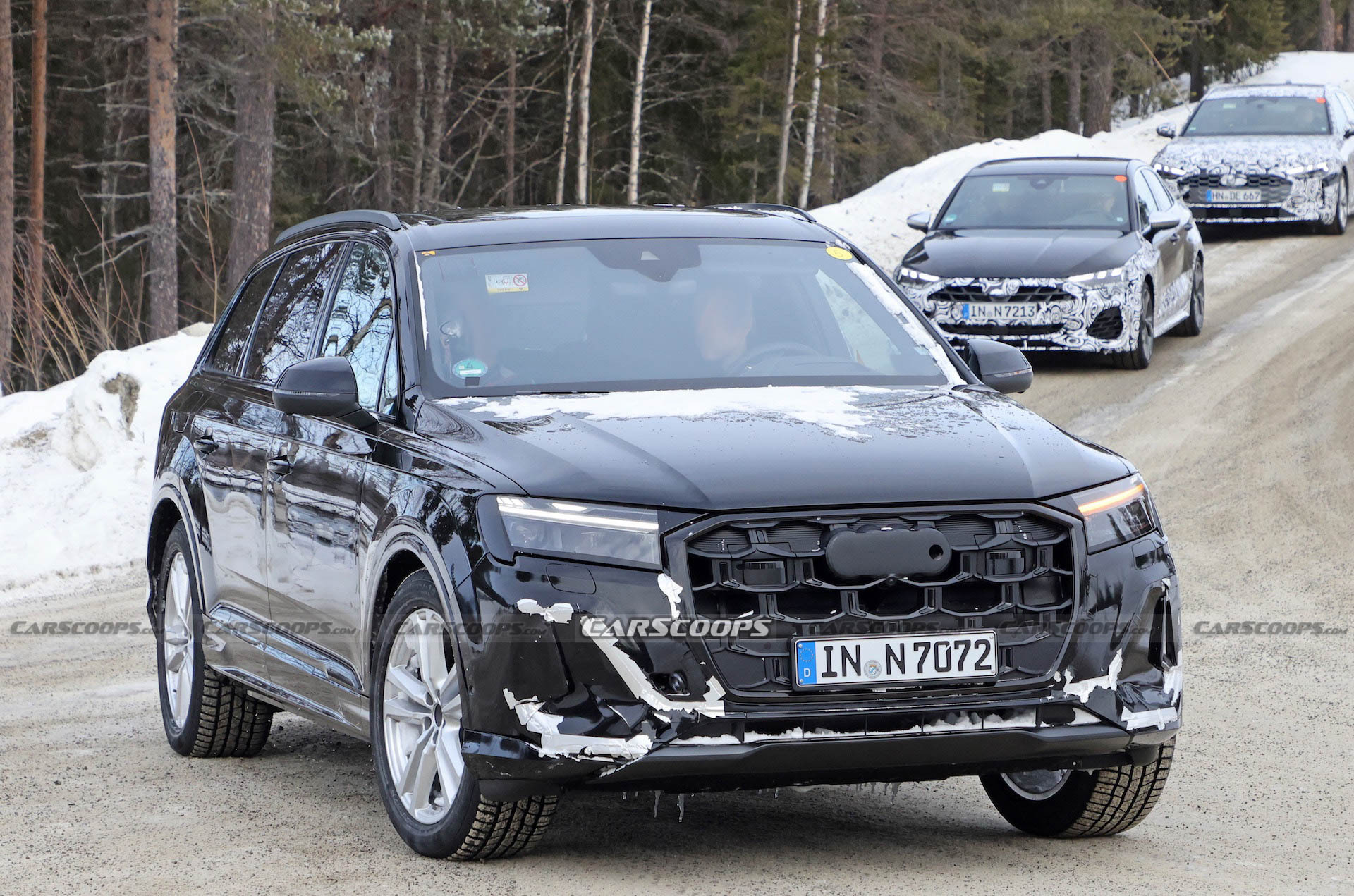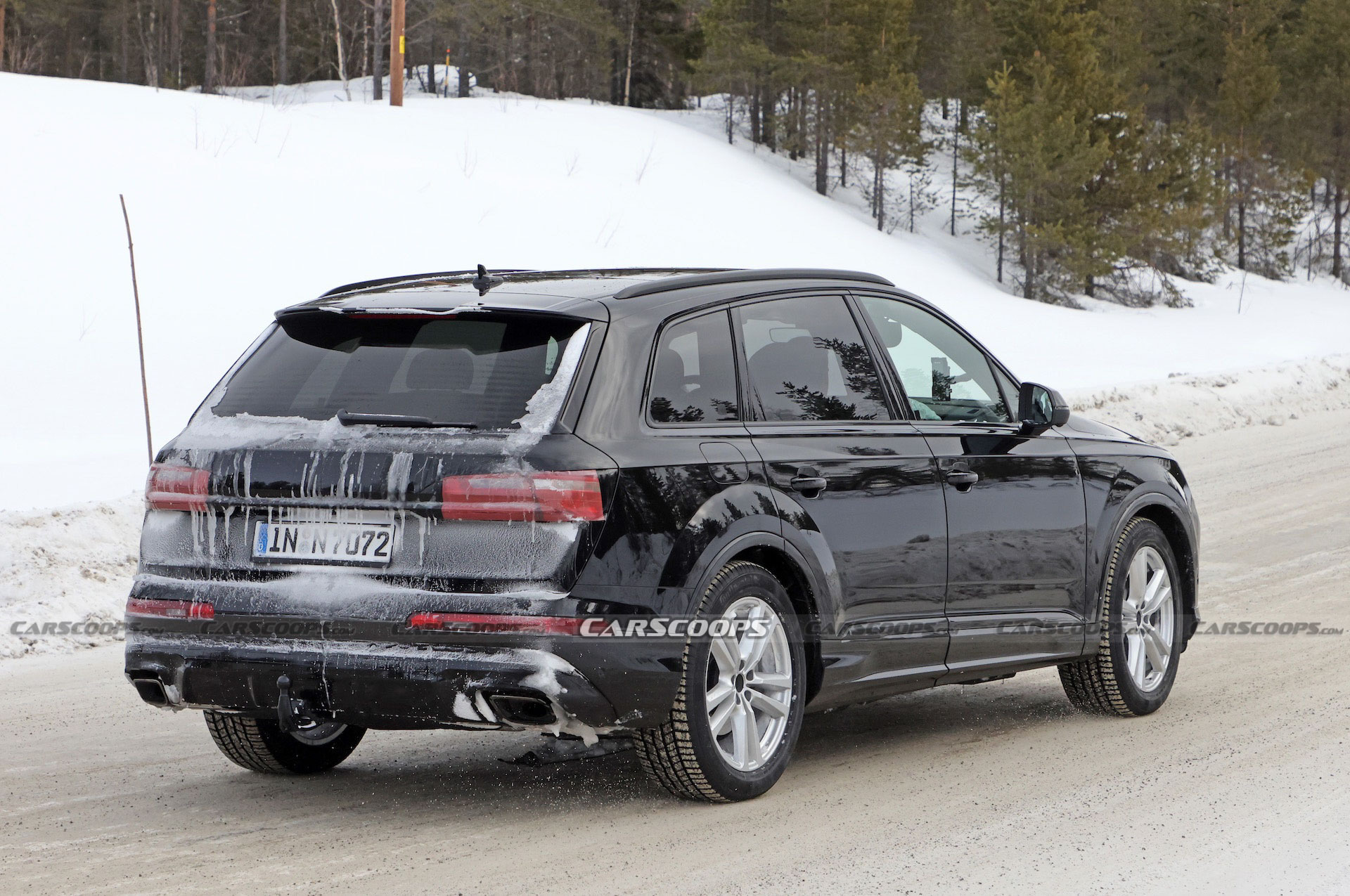Audi’s Q7 SUV was introduced in 2015, a year before the A4 compact sedan, but while the latter is getting a brand new model this year, the Q7 is having to make do with a minor facelift.
It’s not the usual mid-cycle facelift because the Q7 is so old it’s had one of those already, back in 2020. But Audi will be hoping that a second round of updates will keep the seven-seat SUV competitive in the market against rivals like the BMW X5 and Volvo XC90. And to help us gauge its chances, our spy photographers snapped the reworked Q7 with almost no disguise running in convoy with the facelifted A3 and a couple of BMW and Mercedes cars.
The spy shots show no changes happening to the body panels, but Audi has made plenty of subtle tweaks to the front end that differentiate old from new. Most facelifts retain the basic headlight shape but change the inner design of the DRLS, but the Q7’s lights appear to be new, in both shape and design. The updated headlight units are boxier and the DRLs have moved from below the main LED light units to above them.
One of the reasons the headlight units themselves have changed is to enable them to fit around the new grille. At first glance, the outer frame looks much like the old one, but it’s actually more of a square than a hexagon this time. But we wouldn’t blame you for not spotting it, because you were probably too busy taking in the new giant grille mesh structure. Is it only us that’s expecting bees the size of baseballs to come swarming out of the Q7’s snout?
Related: Audi Q7 Models Could Catch Fire Due To Front Camera Issue

It’s harder to make out what changes Audi has in store for the rear of the revised Q7 – it looks mostly unchanged, though we can be sure that the taillight units will be treated to some new graphics. The diffuser fins in the lower portion of the bumper also look to be narrower and more pronounced than they are on today’s SUV.
Interior changes are likely to focus on upgrades to the infotainment and connectivity rather than reshaping the look of the three-screen cabin, and we’re also not expecting any seismic alterations under the hood. The current SUV’s European engine lineup stretches all the way from a 2.0-liter diesel that makes 228 hp (231 PS) in the 45 TDI to 500 hp (507 PS) in the 4.0-liter V8 SQ7, while the base U.S. model is a 261 hp (265 PS) 2.0-liter gasoline-supping 45 TFSI.
One powertrain Audi will be hoping to get back on the Q7’s menu is a PHEV. A couple of 3.0-liter V6 PHEV Q7s, badged 55 TFSI e and 60 TFSI e, were on sale in Europe until supply disruptions forced Audi to pull them from the lineup.

























